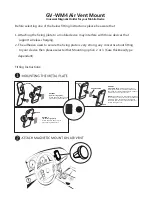
3.3
Benefits
The DDLS 170 is characterized by the following features:
·
The DDLS 170 can be operated at temperatures as low as - 30°C.
·
Interference-free data exchange in full-duplex operation, transmission rate up to
500 kbit/s at a max. range of 120 / 200 m and large functional reserves.
·
High interference immunity through special constructions such as galvanically se-
parated interfaces and FSK modulation.
·
Fast and simple alignment by means of integrated remote multifunction display
and bar graph. The angles can be set independently of one another thanks to
the physical construction of the adjusting bracket.
·
All installation work can be carried out from the front. The DDLS 170 system can
be completely disassembled without removing the connection plate.
Switching off transmitter and receiver
·
Both the transmitter and the receiver can be switched off separately.
Example: Changing aisles of high-bay storage and retrieval units. By switching
off the transmitter and receiver during travel through curves, other optical sy-
stems are not influenced and faulty data transmission does not occur as the re-
sult of signals detected by the receiver which have been emitted by other optical
sensors.
For Profibus only
Signal regeneration
·
Several optical data transmission paths can be connected in series (see Chapter
3.7.4).
·
Trouble-free data transmission with Profibus FMS-Systems in Multi-Master confi-
guration (indirect series connection, see Chapter 3.7.4).
·
Repeater function; signal regeneration increases the possible line lengths and
the number of nodes in the system.
For Profibus only
Selector switch during loss of visual contact
·
Shorter bus access times for Profibus systems in Multi-Master configuration on
renewed visual contact (see Chapter 3.7.4).
·
If the signal received by the data transmission unit receiver is inadequate, the
transmitted and received data are switched off.
In this way, undefined bus conditions occurring as the result of one-sided system
accesses are prevented.
8
DDLS 170
Leuze electronic











































